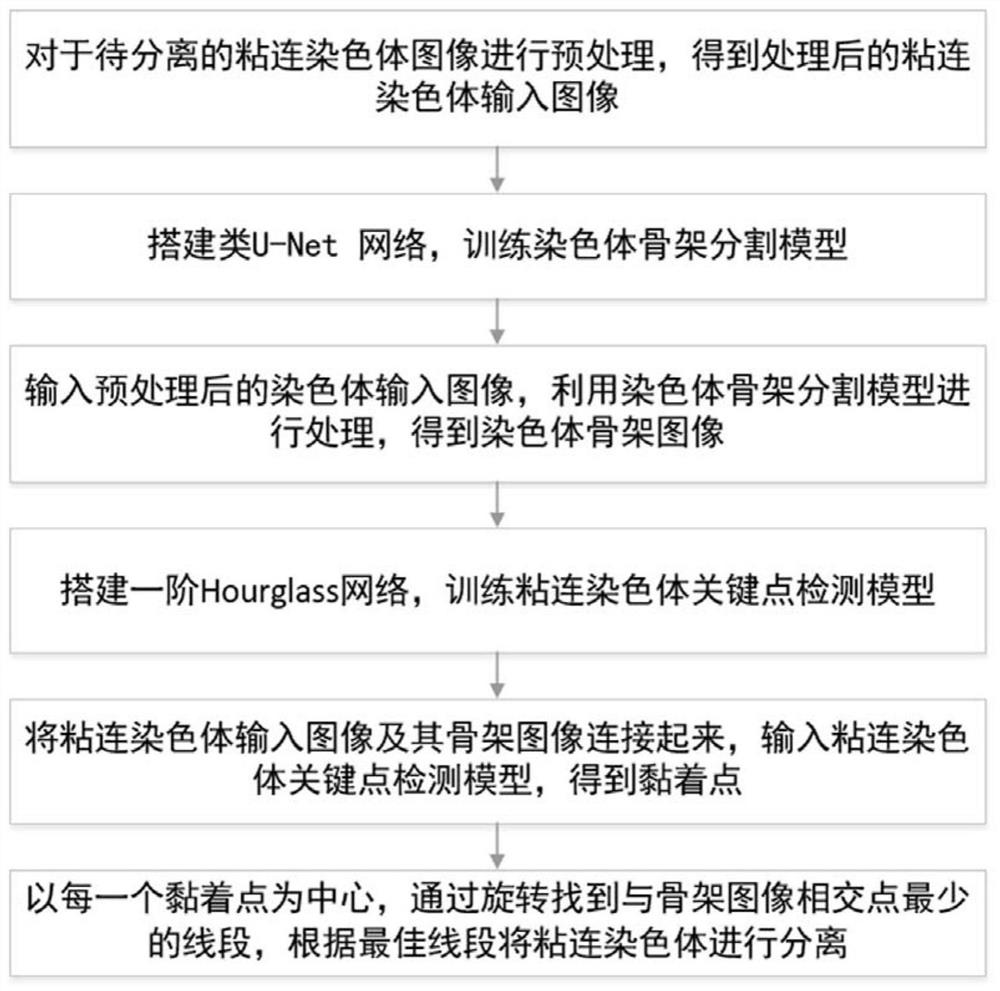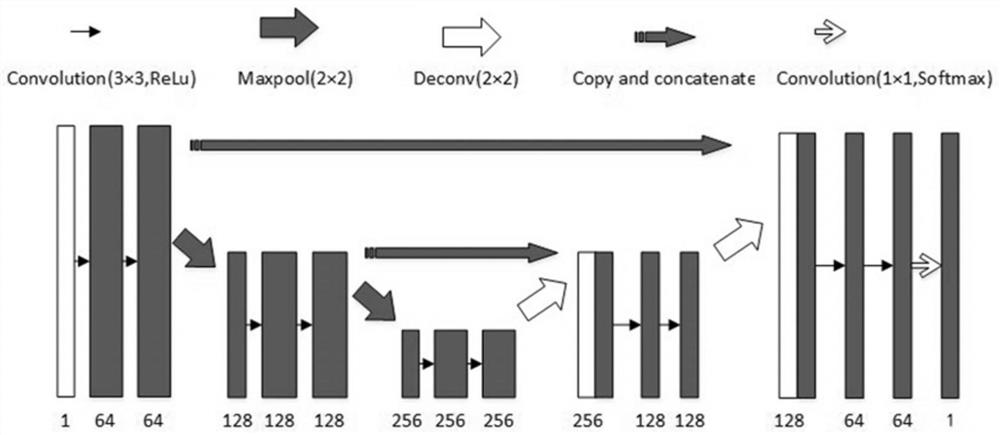Adhesion chromosome separation method and device based on skeleton segmentation and key point detection
A separation method and chromosome technology, applied in the field of chromosome analysis, can solve problems such as unsatisfactory performance, and achieve the effect of good generalization ability
- Summary
- Abstract
- Description
- Claims
- Application Information
AI Technical Summary
Problems solved by technology
Method used
Image
Examples
Embodiment 1
[0035] Embodiment one, such as figure 1 Shown:
[0036] S1. Scale and normalize the cohesive chromosome image to be separated to obtain the cohesive chromosome input image.
[0037] Specifically, firstly, adjust the size of the cohesive chromosome image to be separated to the set value, m × n; we use m=n=128, so that the length and width of the image of cohesive chromosomes become 128 pixels, and the method of bilinear interpolation is adopted for cohesive chromosomes when expanding.
[0038] Then, normalize the size-adjusted cohesive chromosome image, that is, use the standard deviation normalization results obtained by formulas (1)-(4):
[0039] (1):
[0040] (2):
[0041] (3):
[0042] (4):
[0043] Where μ is the average value of pixels in all images, σ is the standard deviation of pixel values in all images, and x i is the i-th pixel value in the image, is the i-th pixel value after normalization processing, is the final pixel value of the i-th pixel ...
PUM
 Login to View More
Login to View More Abstract
Description
Claims
Application Information
 Login to View More
Login to View More - R&D
- Intellectual Property
- Life Sciences
- Materials
- Tech Scout
- Unparalleled Data Quality
- Higher Quality Content
- 60% Fewer Hallucinations
Browse by: Latest US Patents, China's latest patents, Technical Efficacy Thesaurus, Application Domain, Technology Topic, Popular Technical Reports.
© 2025 PatSnap. All rights reserved.Legal|Privacy policy|Modern Slavery Act Transparency Statement|Sitemap|About US| Contact US: help@patsnap.com



